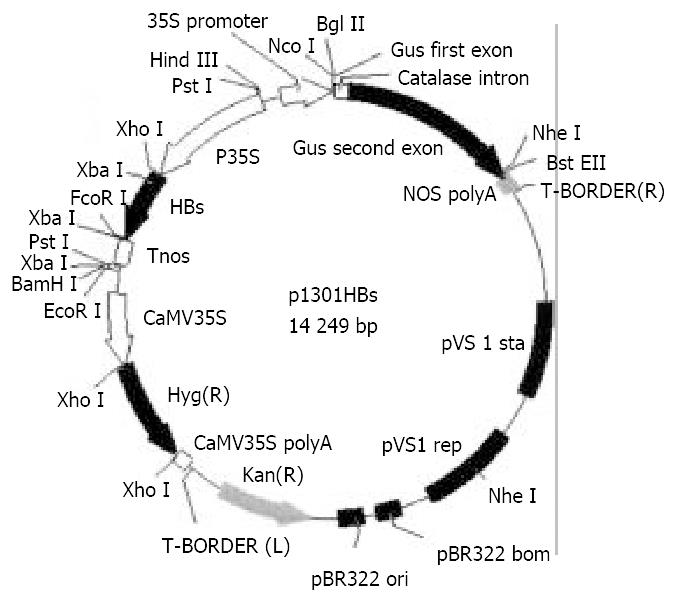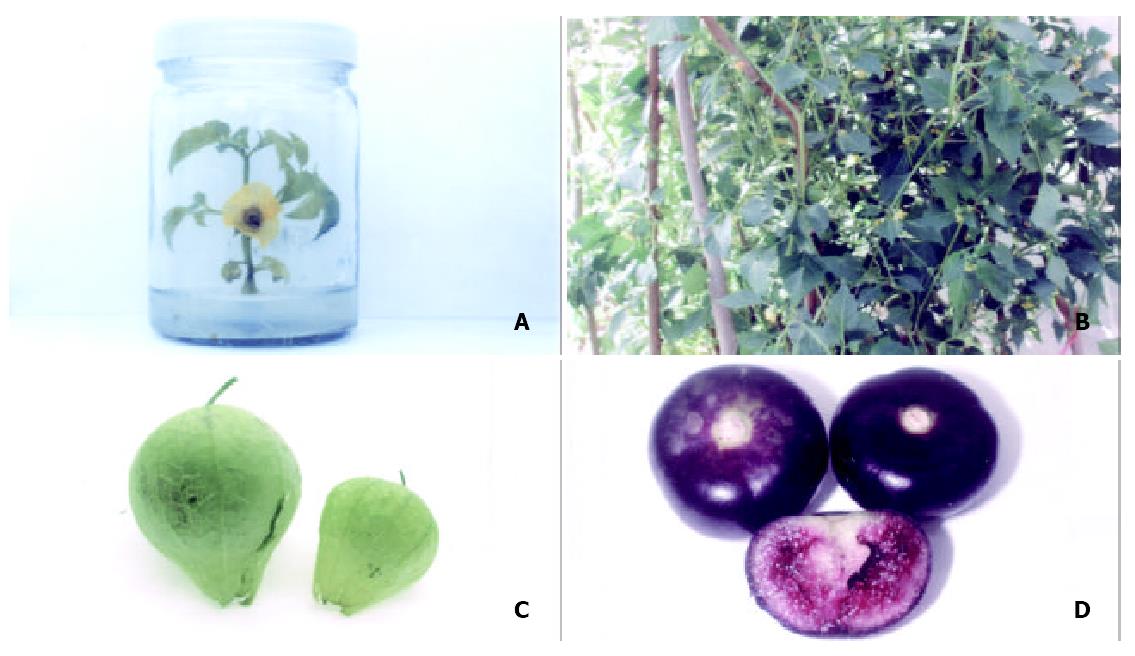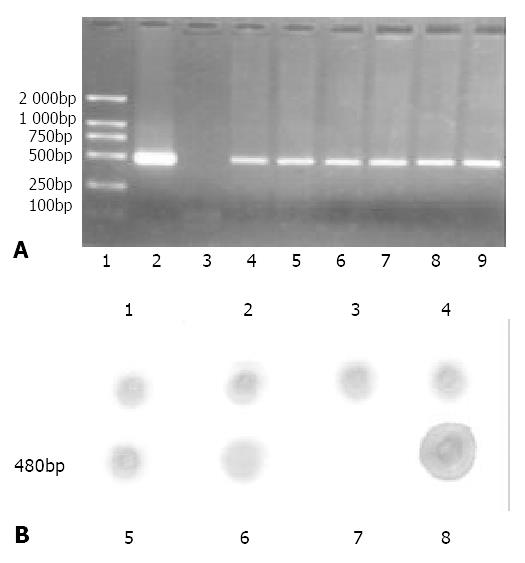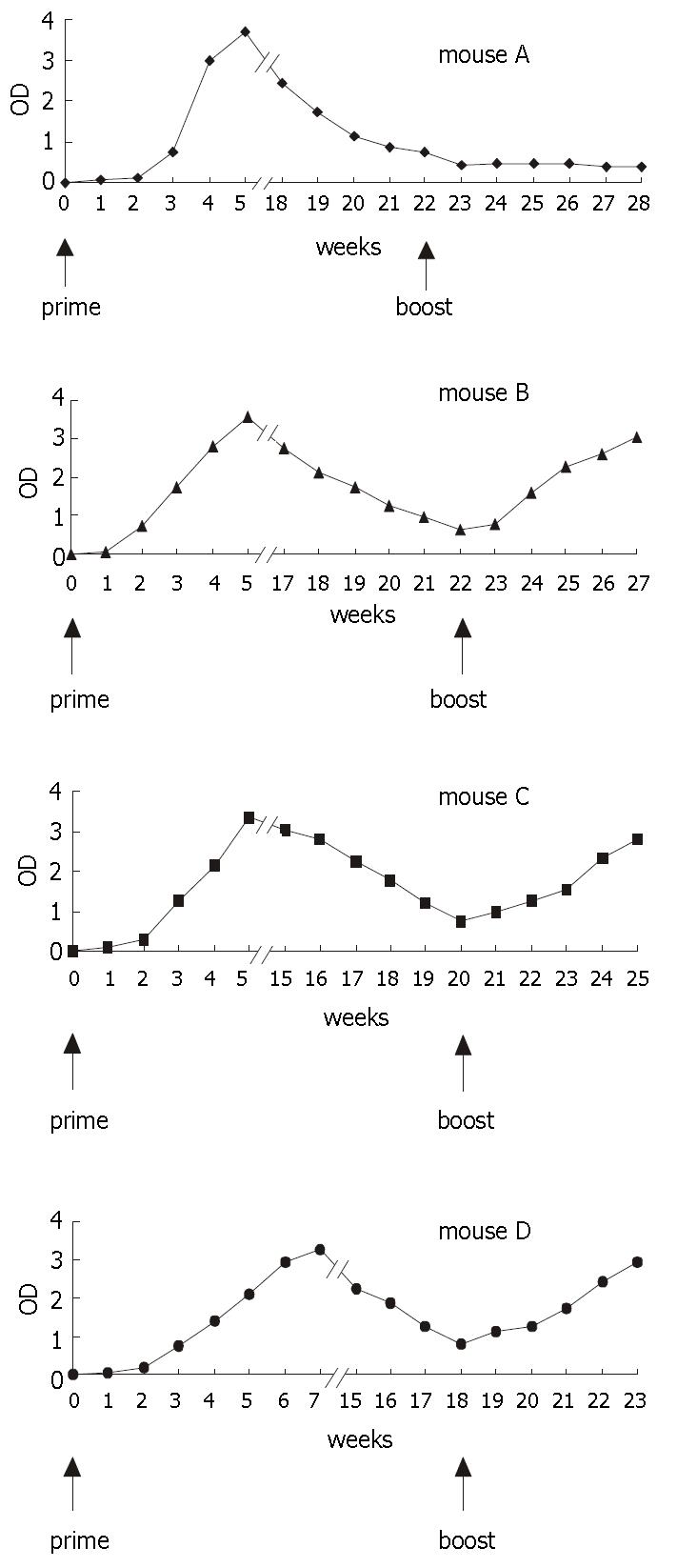Copyright
©The Author(s) 2003.
World J Gastroenterol. May 15, 2003; 9(5): 996-1002
Published online May 15, 2003. doi: 10.3748/wjg.v9.i5.996
Published online May 15, 2003. doi: 10.3748/wjg.v9.i5.996
Figure 1 Plasmid p1301HBs.
Figure 2 Transgenic cherry tomatillo.
A, Transgenic plant in tissue culture; B, Transgenic plant in greenhouse; C, Green transgenic fruits; D, Ripe transgenic fruits.
Figure 3 Analysis of Gus activity in transformed cherry tomatillo tissues.
A, Leaf of transformed cherry tomatillo; B, Leaf of non-transformed cherry tomatillo; C, Fruit of transformed cherry tomatillo; D, Fruit of non-transformed cherry tomatillo.
Figure 4 Identification of HBsAg gene in transgenic cherry tomatillo by PCR (A) and dot blot (B).
A1, DNA marker; A2, Positive Control; A3, Non-transformed plants; A4-9, Trans-formed plants. B1-6, Transformed plants; B7, Non-transformed plants; B8, Positive control.
Figure 5 Serum antibody response elicited by oral prime with transgenic cherry tomatillo.
A.B: Mice were fed non-transformed tissues until week 4, then boosted with a subimmunogenic dose of commercial vaccine; C.D: Mice were fed transformed tissues until week 4, then boosted parenter-ally with a subimmunogenic dose of commercial vaccine.
Figure 6 Serum antibody response elicited by oral boost with transgenic cherry tomatillo.
A: Mouse was primed parenter-ally with 2 µg commercial rHBsAg, and when its serum anti-body level descends to OD < 1.0, mouse was fed with untransformed tissues; B.C.D: Mice were primed parenterally with 2 µg yeast-derived rHBsAg, and when their serum anti-body levels descend to OD < 1.0, mice were fed with transformed tissues as boost.
- Citation: Gao Y, Ma Y, Li M, Cheng T, Li SW, Zhang J, Xia NS. Oral immunization of animals with transgenic cherry tomatillo expressing HBsAg. World J Gastroenterol 2003; 9(5): 996-1002
- URL: https://www.wjgnet.com/1007-9327/full/v9/i5/996.htm
- DOI: https://dx.doi.org/10.3748/wjg.v9.i5.996














